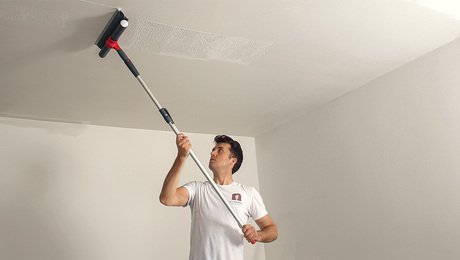Floor technique for bathroom remodels
I have somewhat of unique situation for trying/testing different construction methods. I have 100 rental units that are 40 to 110 years old in Denver. You can imagine that I see what typically goes wrong, and what lasts well.
I’ve seen that a 1″ monolithic concrete pour for a bathroom floor holds up really well. Most bathrooms for rentals built with a wood floor will have some floor rot after 20 years or so. Doesn’t really matter what floor covering is used.
I’ve developed a fix that is cheap, easy and durable, and just wanted feedback and opinions about it. Maybe there are even better ways to go.
1. Remove toilet, demo the rotten wood, replace with plywood as required. If the vanity isn’t rotted, it can stay in place. Use plywood filler as required to bring the repairs within 1/2″ of level throughout the room.
2. You don’t necessarily have to remove any of the floor covering over the parts of the floor that isn’t rotten.
3. Staple down felt over the whole mess, then remesh. Caulk or tape edges to prevent leaks, cover up the toilet hole.
4. Mix up a couple bags of “Levelquik” ($18 each), mix in black concrete colorant.
5. Pour this self-leveling product to a thickness of 1/4″ to 1″, check for any leaks which can be sealed with plumber’s putty on a fingertip.
6. One day later, seal with acrylic or polyurethane concrete sealer. You’re done. You have a floor that won’t need any work in your lifetime, except a quick renewal coat of sealer every few years, or between every tenant if you’re into spiffing it up each time the apartment turns over.
I know this stuff isn’t rated for finished floor, but the same spec sheet says that its compressive strength is 5000 psi.
The black floor is pretty boring, but I’ve tried all sorts of things to make it more interesting, and nothing else worked. The natural grey isn’t very appealing.
We’ve also tried this on countertops, but we don’t have any long-term experience with it yet.
I’m always looking for other long-life ideas for fixing the other high maintenance areas in my rentals. Anybody got any?















Replies
what is levelquik made from. If its a portland substance you could used a acid stain to creat a mable look. If it some type of epoxy, then I,m sorry.
The best employee you can have but you wouldn't want him as a neighbor " He the shifty type"
As Jen Car says , "what ever works."
I think it depends on what type of rentals. Im dealing with some pretty nice units and I use VCT floor tile over backerboard in your case that I also seal. They make some pretty stuff and the patteren goes all the way through. I do keep some left overs in the attic for replacement when needed. Ceramic tile isnt bad if you can store back up for repair . It never changes colors and will always match. You mention the bathrooms but thats a pretty small area . Bathrooms can be done with remants costing 15.00 . I get along pretty good in baths with no damage anyway. Kitchens , entries, halls, laundries, and living rooms see the most damage . Some one is always moving appliances scraping it up even if you furnish appliances. Ive had a couple of renters that moved my fridges out and theirs in with out permission. Any way to date :
Vct and ceramic tile floors are my pick.
Ive heard about stained concrete in low end rentals , but I dont have any of those .
Tim Mooney
Tim Mooney
Tim,
I agree totally about VCT being a great long term material. I think my poured floor would be the best substrate for it for 2 reasons. It doesn't cost any more than hardibacker, and it seals the room a little better when you have that inevitable flood. (less water goes down to the unit below, causing damage)
Although Levelquik is Portland cement based, it mixes up too homogeneously, so it looks quite bland when you use an acid stain on it.
While we're on the subject, what do you like for living rooms in rentals? I hate carpet, and since I can get laminate in for about $3.00/ft., I've started using a lot of it.
Self leveling cement is not suitable for a finish floor. It is flat and it has high compressive strength -- but it is not abrasion resistant. It will gouge very easily.
Billy
I'm sure the sealer hardens it somewhat, and those bars of soap aren't quite the gougers that you might find in other rooms of the house, I'll bet..
Excellence is its own reward!
True -- it's not a laundry room where someone may drag a heavy appliance across the floor.
The SLC gouges very easily though and it would concern me to use it as a finish floor.
Billy